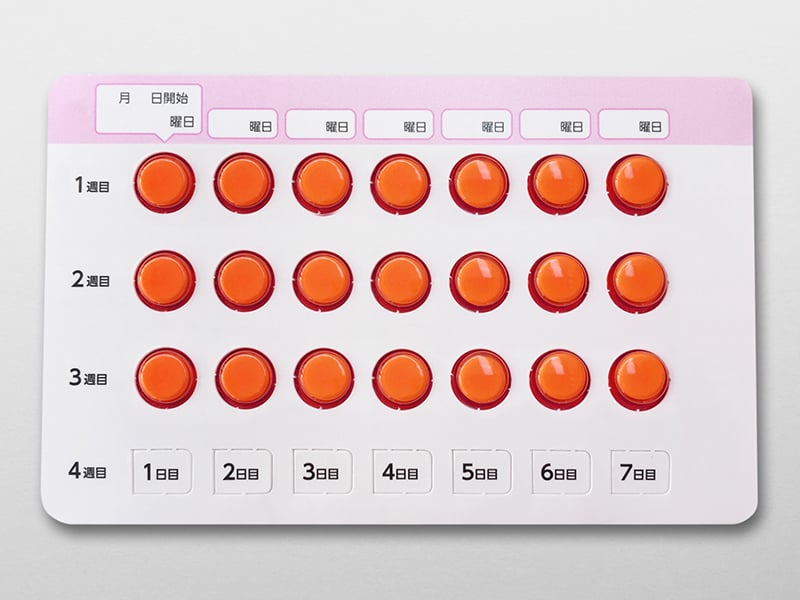
Japan, a country steeped in history and culture, has seen a shift in societal attitudes towards sexual health in recent years. While tradition and discretion have long been associated with this nation, the importance of sexual well-being and access to comprehensive sexual health services is increasingly acknowledged. Whether you’re a local resident, a curious tourist, or a resident expatriate, understanding how to access sexual health services in Japan is vital for personal well-being and informed decision-making.
Views on Sex
Japanese attitudes toward sex and discussions surrounding it are often characterized by a blend of cultural conservatism and evolving modern perspectives. Historically, Japan has maintained a reserved stance on open discussions about sex and related topics, reflecting the influence of traditional values and societal norms. Conversations about sexual health, particularly sexually transmitted infections (STIs), have traditionally been shrouded in stigma and discretion. This reluctance to openly discuss sexual matters has contributed to a level of misinformation and misconceptions surrounding sexual health in Japan.
One of my good friends ended up in a sticky situation where his girlfriend contracted a very treatable STI from him, and all hell broke loose because she viewed herself as forever ruined. This is a stark contrast to England, where getting one of the more friendly STIs isn’t viewed as a big deal in the slightest. So, it’s worth bearing in mind the weight of such discussions with your partner whilst here.
However, there is evidence of a generational shift in recent years. Younger generations in Japan, influenced by globalization and increased exposure to Western cultures, tend to exhibit more openness in discussing sexual matters. They are more likely to seek out information on sexual health and engage in conversations about STIs. The rise of online platforms, including social media and educational websites, has played a crucial role in providing a safe space for individuals to access information and engage in discussions about sexual health topics.
Studies have shown that this generational shift is associated with an increase in sexual health awareness and a growing willingness to seek out regular STI checks among young Japanese adults. The availability of discreet and accessible sexual health clinics, mostly in bigger cities, has helped with that. However, whilst there’s progress, I’d argue that the general knowledge surrounding getting under the sheets is still significantly lacking.
The recent news of syphilis cases breaking 10,000 for 2 years straight in Japan could be argued to prove that there’s still a long way to go.
Contraception
In Japan, the main form of contraception you’ll encounter is likely to be the trusted condom. They’re available to buy everywhere from combinis to Don Quijote. It’s worth noting that Japanese condoms are notoriously a bit on the small size, at around a 30-40mm diameter compared to the American 40 – 50mm. So, if you’re worried, I would give you the nudge to bring some of your own, or if you are in a tight spot, head to Don Quijote and get yourself some Mega Big Boy condoms. Don’t laugh, that really is the name! At 46mm in diameter, it’s a trusted favorite.
The Pill

As for female contraception, you can easily acquire birth control pills by visiting your regular gynecologist. The cost typically ranges from ¥2,000 to ¥3,000 per month (not included in health insurance), depending on your specific doctor and the brand of pills prescribed. Be prepared for a routine blood test before you receive your prescription.
Now, let’s talk options. Japan offers a diverse range of birth control pills available by prescription. These include both monophasic pills (which maintain a constant hormone dose throughout the cycle) and multiphasic pills (with varying hormone levels during the pill schedule). Monophasic pills typically follow a 21-day cycle and popular brands include Marvelon (マーべロン) and Ortho M-21 (オーソM-21). On the other hand, multiphasic pills are more abundant, offering options for both 21 and 28-day cycles. Some of the commonly used multiphasic pills include Triquilar (トリキュラー), Ange (アンジュ), New Phase (シンフエーズ), Ortho 777 (オーソ777), and Marvelon (マーべロン).
Other Forms of Contraception

IUS and IUD are available but at a whopping ¥20,000 – ¥40,000. You’ll need a consultation with a gynaecologist to get one. Here in Japan, these aren’t as popular of a choice for ladies, so you might have to fight your corner about why you want one with your doctor.
The birth control implant (避妊インプラント hinin inpuranto) is currently unavailable in Japan.
Emergency Contraceptives
Securing emergency contraception in Japan can be somewhat challenging, and the costs can fluctuate significantly, generally averaging around ¥10,000. It’s important to note that obtaining the morning-after pill requires a doctor’s prescription, which entails making an appointment and confirming that they offer this service when you call. You can refer to it as the “mo-ningu afutaa piru” (モーニングアフターピル) to simplify communication, although the kanji reading is “kinkyuu-hinin-hou” (緊急避妊法).
I think this is one of the greatest failings of Japan’s sexual health services, as clinics often aren’t open on weekends. So, let’s say an accident happens on Friday night, you’ll be left waiting until Monday morning for an appointment. It’s commonly known that Plan B’s efficacy decreases as time since the incident increases, so this isn’t ideal. Don’t get me wrong, I think it’s great that it’s on offer at all, but this system still feels a bit flawed.
If you want my advice, if you ever get the chance to meander onto an American base (there are a lot to meander onto, just make a military friend and they can sign you on) then go to a shop there as it’ll be over the counter. You never know, it just might come in handy.
STI Testing
If you’re considering getting tested for STD/STI in Japan but have no symptoms, here’s what you need to know. Men can visit a urology clinic, while women can go to a gynecologist for testing. The common tests available cover:
- HIV
- Chlamydia
- Gonorrhea
- Candida
- Trichomoniasis
- Hepatitis B and C
- Syphilis
Please note that testing for Genital Herpes may not be possible when no symptoms are present. The screening costs are not covered by Japanese Health Insurance for asymptomatic individuals, so you’ll be responsible for the full expenses, typically ranging from a few thousand yen per test to around ¥20,000 – ¥30,000 for a comprehensive screening. Results usually take about a week, although some clinics offer same-day HIV testing.
One hack my friends and I found, is to say that you have symptoms, or that your partner has symptoms. This then makes the consultation a symptomatic visit to the doctor, and your insurance will kick in. It’s unfortunate that you might have to resort to lying to get reasonable access to the service, but now you know!
For added convenience, Japan Healthcare Info (JHI) can provide a home testing kit at a cost similar to visiting a clinic. The same laboratory used by doctors conducts the tests, and results can be emailed to you. Free HIV testing is available at local public health centers but has eligibility criteria, including a waiting period of 3 months after exposure and intermediate-level Japanese language skills.
Some Japanese Help
When dealing with sexual health problems in Japan, the biggest barrier you’ll probably find is the language. So, I made a list of common STI’s and symptoms for you to refer to when you head to the clinic:
| English Name | Japanese Name | Romaji Name |
|---|---|---|
| HIV | HIV(ヒト免疫不全ウイルス) | HIV (Hito Men’eki Funzaru Uirusu) |
| Chlamydia | クラミジア | Kuramijia |
| Gonorrhea | 淋病 | Rinbyou |
| Candida (Yeast Infection) | カンジダ | Kanjida |
| Trichomoniasis | トリコモナス症 | Torikomonasu-shou |
| Syphilis | 梅毒 | Baikyoku |
| HIV | HIV(ヒト免疫不全ウイルス) | HIV (Hito Men’eki Funzaru Uirusu) |
| Genital Herpes | 陰部ヘルペス | Inbu Herupesu |
| HPV (Human Papillomavirus) | ヒトパピロマウイルス | Hito Papiroma Uirusu |
| Hepatitis B | B型肝炎 | B-gata Kansen |
| Hepatitis C | C型肝炎 | C-gata Kansen |
| Scabies | 疥癬(かいせん) | Kaisen |
| Pubic Lice | 寄生虫 | Kiseichuu |
| Molluscum Contagiosum | 軟性イボ | Nanshou Ibo |
| Genital Discharge | 生殖器からの分泌物 (せいしょくきからのぶんぴつぶつ) | Seishokuki kara no Bunpitsu |
| Pain or Burning Sensation | 痛みや灼熱感 (いたみやしゃくねつかん) | Itami ya Shakunetsu-kan |
| Itching | かゆみ | Kayumi |
| Painful Urination | 痛い排尿 (いたいはいにょう) | Itai Hainyou |
| Sores or Ulcers | びらんや潰瘍 (びらんやかいよう) | Biran ya Kaiyou |
| Swollen Lymph Nodes | 腫れたリンパ節 (ふれたりんぱけつ) | Fureta Rinpa-ketsu |
| Flu-Like Symptoms | インフルエンザのような症状 (いんふるえんざのようなしょうじょう) | Influenza no You na Shoujou |
| Skin Rash | 皮疹 (ひしん) | Hishin |
| Abdominal Pain or Discomfort | 腹痛や不快感 (ふくつうやふかいかん) | Fukutsuu ya Fukai-kan |
Sexual health is as important as any other health. I hope this guide has somewhat helped you to get your head around what you can do to look after yourself.

















